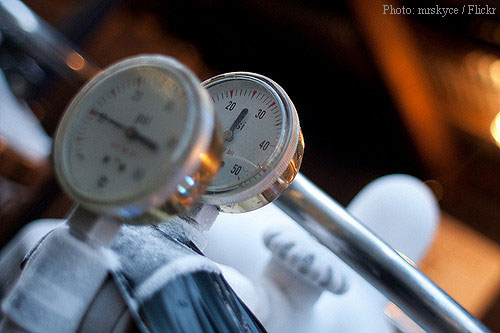Enough organs are being donated for transplant each year. Unfortunately, less than 40% of those organs (particularly hearts and lungs) actually get to be transplanted. The rest have to be discarded because they can’t be kept in ice for more than 4 hours without becoming damaged. Knowing how long the wait lists are for these organs, it doesn’t take a genius to conclude that something has to be done to improve those figures.
Storing the organs isn’t the problem — that can be done via freezing, also known as cryopreservation. The challenge lies in thawing the organs without causing damage.
Presently, the most widely used cryopreservation technique is vitrification. This involves the use of a special solution (a mix of anti-freeze and organ preservation chemicals) to keep tissues and organs in a gel-like state at around -160 degrees Celsius (or -256 degrees Fahrenheit). That’s the easy part. The hard part comes when the organs need to be warmed and thawed. If thawing happens too quickly or unevenly, the organ will crack. If it’s thawed too slowly, dangerous ice crystals will form. Either way, the organ will be rendered useless.
That’s the dilemma that the research team led by Professor John Bischof of the University of Minnesota seems to have solved. By turning to magnetic nanoparticles, they were able to achieve even thawing, which is exactly what’s needed to preserve the sample in its usable form.
Referring to their technique as ‘nanowarming’, the process begins by infusing tissue and blood vessels with a mixture of cryoprotectant solution and silicon-coated iron oxide nanoparticles. After infusing, the samples are cooled in liquid nitrogen. When the time comes for rewarming, the sample is placed within an electomagnetic coil that’s designed to produce a magnetic field. By flipping the magnetic field back and forth, the nanoparticles within the sample move around, causing it to warm rapidly and uniformly. Supposedly, warming happens at a rate which is 10 to 100 times faster than current methods being used, preventing ice crystals from forming and damaging the tissue
The team did their test on samples ranging from 1 to 50 milliliters. After the nanowarming process, the tissues appeared well-preserved, without any signs of harm. Even the iron oxide nanoparticles were safely washed away.
Following this preliminary positive results, the team is now planning on testing the technique on bigger tissues, then small animal organs, followed by organs of bigger animals, and eventually, human organs.
While there is, of course, no guarantee that the technique will work on whole organs which have more complex tissue types and cellular arrangements, the important thing is — it’s one big step forward. Previously, successful thawing could only be done on 1 mL tissues. The leap from 1 mL to 50 mL is a gigantic one that promises to revolutionize organ transplant preservation and distribution. And with this comes new hope that more lives can be saved.
The study was published in the journal Science Translational Medicine.
- Bulenox: Get 45% to 91% OFF ... Use Discount Code: UNO
- Risk Our Money Not Yours | Get 50% to 90% OFF ... Use Discount Code: MMBVBKSM
Disclaimer: This page contains affiliate links. If you choose to make a purchase after clicking a link, we may receive a commission at no additional cost to you. Thank you for your support!


Leave a Reply